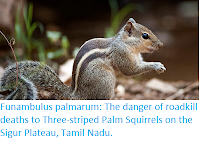Two people have died in Kerala State, India, as Cyclone Tauktae moved up the western Indian coast over the past two days, bringing with it high winds, heavy rainfall, and storm surges. The storm has caused widespread disruption, flooding low lying areas, uprooting trees and downing power lines, but has so far caused relatively few casualties to the evacuation of thousands of people from areas expected to be the worst hit (before the introduction of this practice, tropical storms making landfall in India regularly killed thousands of people). So far the storm has passed along the shores of Tamil Nadu and Kerala states, and is expected to pass Goa and move on to Maharashtra today, eventually making landfall in Gujarat on Tuesday 18 May 2021.
Tropical storms, called Cyclones in the Indian Ocean and South Pacific, are caused by solar energy heating the air above the oceans, which causes the air to rise leading to an inrush of air. If this happens over a large enough area the inrushing air will start to circulate, as the rotation of the Earth causes the winds closer to the equator to move eastwards compared to those further away (the Coriolis Effect). This leads to tropical storms rotating clockwise in the southern hemisphere and anticlockwise in the northern hemisphere. These storms tend to grow in strength as they move across the ocean and lose it as they pass over land (this is not completely true: many tropical storms peter out without reaching land due to wider atmospheric patterns), since the land tends to absorb solar energy while the sea reflects it.
Despite the obvious danger of winds of this speed, which can physically blow people, and other large objects, away as well as damaging buildings and uprooting trees, the real danger from these storms comes from the flooding they bring. Each drop millibar drop in air-pressure leads to an approximate 1 cm rise in sea level, with big tropical storms capable of causing a storm surge of several meters. This is always accompanied by heavy rainfall, since warm air over the ocean leads to evaporation of sea water, which is then carried with the storm. These combined often lead to catastrophic flooding in areas hit by tropical storms.
See also...



Follow Sciency Thoughts on Facebook.
Follow Sciency Thoughts on Twitter.







